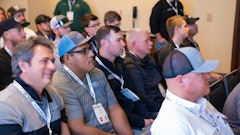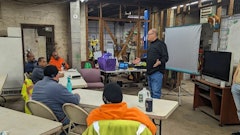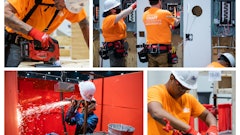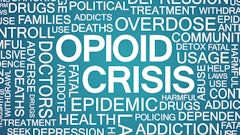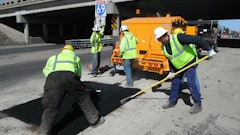
A prime aspect of “Risk Management” is the effort to limit, reduce, or eliminate any construction effort that would pose a safety risk. It’s more than a list of do’s and don’ts, it’s a culture, it’s part of the DNA fabric of your company about how they perform work and being commit to sending their workers home safe and in one piece…consistently.
The legality and science of risk management is quite well known among most contractors and is growing in need to be embraced, understood, and practiced by all specialty contractors. Our country is one of the most litigious in the world and, sadly, this certainly has found a home in the construction industry. So, it is wise to take safety seriously, having not only documents that are required but more, have a commitment to see that every worker is educated on, trained on how, and understanding the “Why?” behind doing things right the first time in the most safe manner possible.
Let’s first address safety in your organization. While this article will not fulfill the entire educational needs for a total safety program at your company, there are some key learning points that have been successfully implemented by many contractors that can bring value to your company.
Safety 1st
Safety must be first everywhere possible in your company. I know of no contractor that will admit to NOT believe in the importance of safety but once again, it is in the actions and behavior of our most senior of leaders, including the owner, that sells safety 1st.
Therefore, what can you do to demonstrate in action and behavior that safety is 1st? Consider a few suggestions below:
- Personally invest in safety education.
- Lead safety training workshops personally.
- Make safety related questions part of your daily discussions with field leaders, office workers, field workers, etc.
- Personally investigate when there’s been a safety failure.
- Publicize “Safety 1st via signage, posters, proposals, contracts, “grafitti” on company trucks, business cards, and all marketing pieces and internet outlets.
Resource Safety 1st
The resourcing of Safety 1st is to consider all literature, tools, and equipment that should be reviewed, updated, and replaced as needed as it relates to safety. Again, some quick highlights:
- Commit a budget amount each year to inspect, replace, and maintain all equipment, vehicles, and power tools.
- Inventory your hand tools and consider what needs “sharpening,” fixed, and replaced.
- Are your educational materials clear in their intent to teach safe practices?
- Do you have clear and visible signage in your shop, yard, and especially on each job site?
- Do you have informative “5 S Maps” that indicate where everything is kept on trucks, trailers, your shop, and yard? The 5-S Map can contribute to faster inventory management and keep workers from pushing and pulling of tools, cords, shovels, etc. to find what they are looking for.
- Keep ample supply of barricades, flare tape, emergency kits, safety vests, tie-offs, and just about every other “safety tool” that can help prevent any issues.
Educate Safety 1st
Educate Safety 1st most certainly includes actual training workshops and live demonstrations of safe working processes and techniques, but it also affects your company in a few other areas. Consider:
- The purchase of hats and shirts that have a clear reference to safety.
- Commit 5-7 minutes of stretching for all workers and leaders…office and field employees.
- Require part of your “pre-con” for the new project to address every safety “risk” potential on the new job.
- Take a brief “safety debrief” after each project from the hourly workers involved with job. If you perform more than one project in a short time span, review multiple projects once a week with your hourly workers.
- Incorporate one positive safety story a week in meetings or share a learning lesson from another company who may have had a safety problem.
Recognize & Reward Safety 1st
Not much secret here and many contractors are practicing some degree of this suggestion. If you do not or need upgrading your company’s approach, consider a few of the following:
- Recognize all new milestones of “incident free” goals and the people who are making it happen.
- Engage rewards to include company logo giveaways such as shirts, hats, gloves, etc.
- For exceptional safety performance and results look at some “cash” rewards or tickets, coupons, dinner cards, etc. Be careful here due to the taxing of such items but provide some form of “hard” proof that safety is saving you money.
- Engage proven workers to conduct the safety training for newly hired employees.
- Consider appointing a “Safety Coordinator” for each work crew and your office. The “SC” isn’t the safety czar but instead, another outlet for employees to go to with questions, resource needs, etc. The SC can also assist foremen on scouting out potentially unsafe work areas, inspect equipment and tools needing repair, and assist in placing orders for new safety equipment.
Accountable Safety 1st
All the previous suggestions and examples are for naught if we do not practice what we preach and hold people and processes accountable. Now for some tough love, consider:
- Hold leaders accountable to invoke safety discussions before every project and at the beginning of each new day.
- When leaders do not practice the previous, coach, counsel, and discipline as needed.
- Clearly educate your workers on safe practices and when they do not comply with such practice, coach, counsel, and discipline as needed.
- When “repeat offenders” continue to be non-compliant about following safety rules and practices…counsel, document, and fire! Do not allow such people to stay with your company…it sends a very bad message that Safety 1st is really “Safety Whenever it’s Convenient.”
- Make Safety 1st mandatory for every employee.
Our industry has come a long way in the area of safety, but our insurance rates continue to be a bit high compared to other industries. Accidents happen but there is a tremendous amount of prevention that we really can do.
Prevention is the key word here. Prevention in the form of education, reminding, and having needed safety resources and safe working equipment and tools can reduce your risk ten-fold. But we need to clearly communicate safety and be consistent in practicing what we are preaching about safety.





